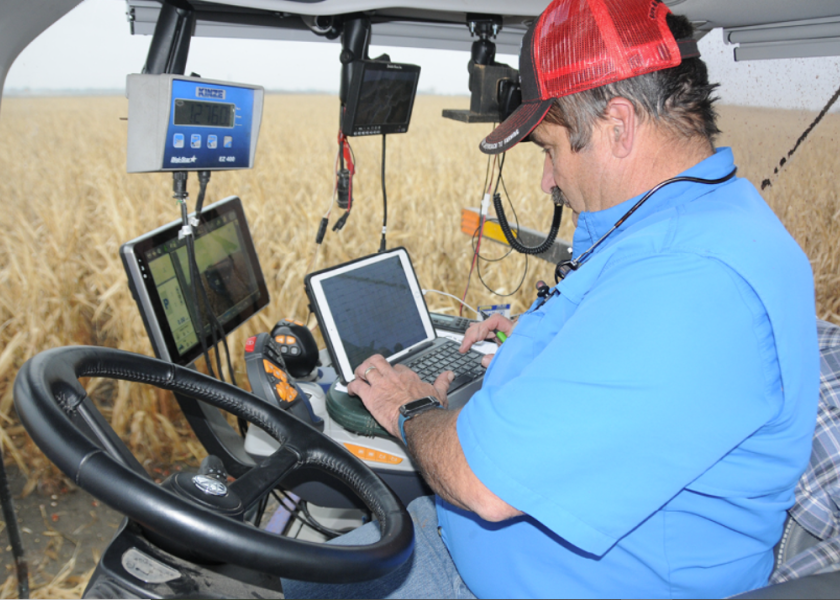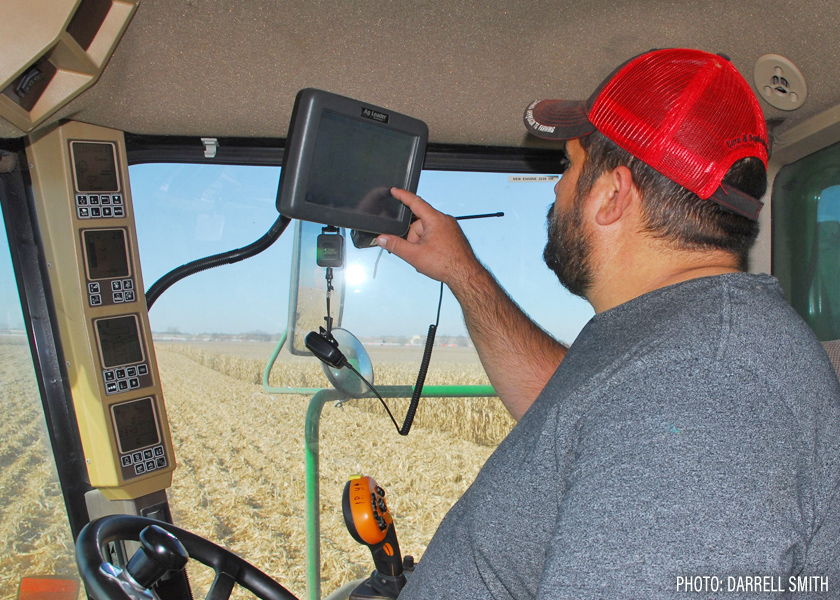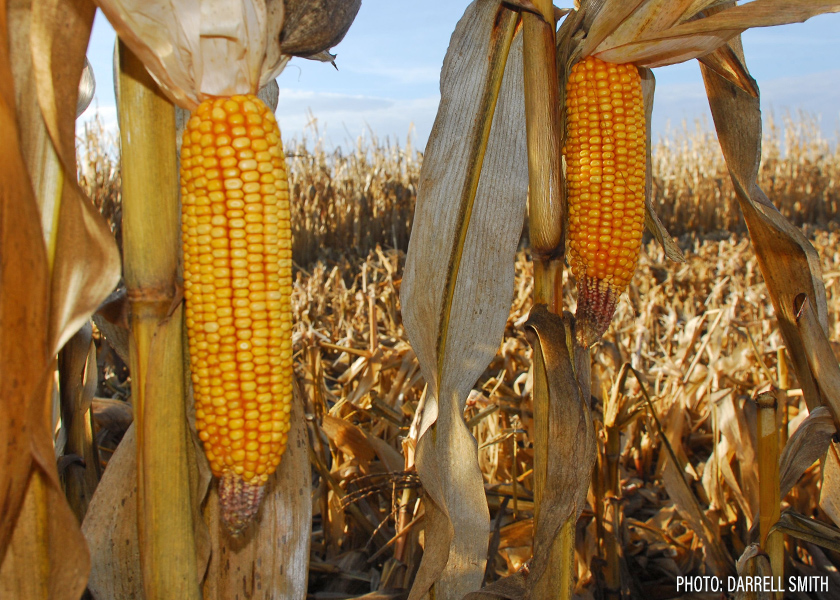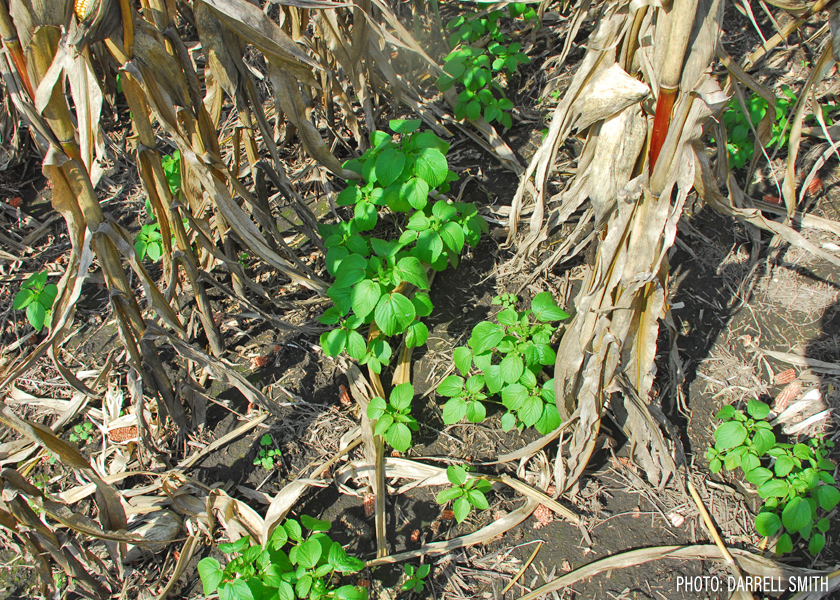Corn Yield Checks In and Out of the Combine

During corn harvest, there are some things you can do from a data collection standpoint that will help answer a lot of questions post-harvest this coming winter when you're talking with your agronomist and going through yield maps.
Here are five things to consider while you’re combining corn, offers Ken Ferrie, Farm Journal Field Agronomist.
1. Pay attention to the yield monitor and watch the maps being built.
“When you see an area in the field that has a drastic drop in yield, right then is the time to stop and collect data – on the monitor and in the field – to help us answer what's going on,” Ferrie says.

2. Evaluate the quality of your corn stand and do stand counts.
Ferrie says to check the stand in both the good and poor-yielding parts of the field. “Stretch out your tape, count the plants, and get your ear count in both areas,” he says. “Whip out your phone and take some pictures for comparison.”
If plants are missing in an area, it’s going to be difficult to determine why they’re gone unless a pest has left evidence behind. However, you can make notes on what you find in that part of the field, which will still be useful to for 2024 planning purposes.
“You can say, ‘Hey, we had a 10,000 to 11,000 drop in our stand in that spot. That may go back to a number of different things (that we can’t confirm), but at least when we're going through the maps, we realize it was a stand count issue,’” Ferrie says.

3. Do an ear count and check the plant stalks.
“If there's 6,000 plants out there without an ear, and size-wise they're a third less in diameter than the plants next to them, that's something you would note because that would indicate an early season stress,” Ferrie says.
If the stalks are normal, but the ear size varies quite a bit, that would be another factor to note.
“Ear size would be a clue to help tell us what stress occurred or when this stress took place,” Ferrie says. “If there’s a variation in the ear size, try to document how many ears are upright versus how many are down.”
Depending on how far along the harvest season is, the ears could all be down, he acknowledges. But, Ferrie says if you see that in good-yielding areas 90% of the ears are up and only 10% are down versus in poor-yielding areas 50% of the ears are up and 50% are down, that’s an indication the latter group of plants died prematurely compared to the higher-yielding area.
“What we can do then is investigate for any disease issues that might have been out there,” he says.
4. Evaluate corn ear fill.
“We want to compare poor grain-filled ears to ears in the good part of the field,” Ferrie says. “In this case, we can see there's a lot of tip load-off. There are kernels that are shriveled up in size. This is a late stress situation that happened after pollination, perhaps in the last two weeks of grain fill.”
5. Determine your weed pressure and whether or when you need to use a burndown treatment.

Take stock of what kind of weeds are present, such as winter annuals – especially if you are in a no-till or strip-till program, Ferrie advises.
“We need to think about our winter burndown programs especially if we want to plant soybeans early and we don't want to be planting in a mat of chickweed, henbit and marestail,” Ferrie says.
He says you probably don’t need an elaborate or overly expensive product combination to take out those weeds.
“Usually, guys are running just a mixture of 2,4-D and a dicamba-type product here in central Illinois to clean this up,” Ferrie says. “We just have to get on top of it and get it done as November is coming at us. We don't want to have to fight this weed problem next spring.”
Ferrie offers more tips and recommendations in his Agronomic Minute on evaluating corn yield performance. Listen to it here:
Ferrie: Huge Yield Swings Found In Iowa and Illinois Cornfields







